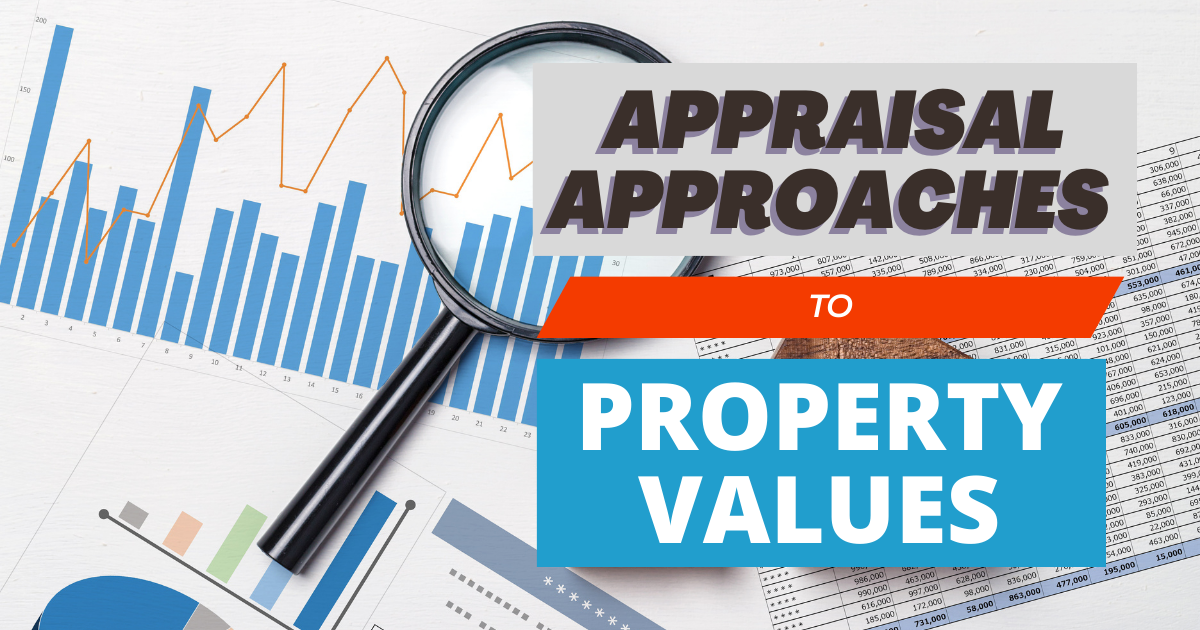
Real estate appraisal is a critical process for determining the value of a property. There are three main approaches used by appraisers to estimate a property’s value, the cost approach, the sales comparison approach, and the income approach.
- Cost Approach: This approach evaluates the cost of constructing a similar property, including the cost of land, materials, and labor. The appraiser then deducts depreciation from the estimated cost to arrive at a property’s estimated market value.
- Sales Comparison Approach: This approach compares a property to similar properties that have recently sold in the same area. Appraisers take into account differences in size, location, and other relevant factors to estimate the property’s market value.
- Income Approach: This approach evaluates the property’s income-generating potential. Appraisers use data on rental rates and occupancy rates to determine a property’s estimated gross income and calculate an estimate of the property’s value based on its expected income stream.
Each approach has its own advantages and disadvantages, and the final value of a property may even be based on a combination of all three approaches.

The Cost Approach
The cost approach to value in real estate appraising is a method used to determine the estimated market value of a property by evaluating the cost of constructing a similar property. This approach takes into consideration the cost of land, materials, and labor, as well as depreciation, to arrive at an estimate of a property’s value.
The cost approach is often used in appraising new construction since it provides a reliable estimate of the cost of building a property from scratch. It is also used when evaluating older properties, where a comparison to similar sales may be difficult to find, or when the property is unique and there is limited information available on recent sales in the area.
The process of the cost approach begins by evaluating the value of the land. The appraiser will consider factors such as location, zoning, and topography to determine the value of the land. Next, the appraiser will calculate the cost to construct a similar property, including the cost of materials and labor. Finally, the appraiser will deduct depreciation from the estimated cost to arrive at the property’s estimated market value.
For example, let’s say that a property is located in a desirable area and the appraiser determines that the value of the land is $200,000. The appraiser estimates that it would cost $300,000 to construct a similar property, including the cost of materials and labor. After deducting depreciation (zero in the case of new construction), the appraiser estimates the property’s market value to be $500,000. It is important to note that the cost approach is not always the most accurate method of determining a property’s value, as it does not take into account the current market conditions or the property’s specific characteristics. Another disadvantage is it is subjective in determining an appropriate depreciation amount to deduct so the value conclusions can vary based on an appraiser’s opinion of depreciation. However, it can be a useful tool for appraisers when used in conjunction with other methods, such as the sales comparison approach or the income approach.
The Income Approach
The income approach to value in residential real estate appraising is a method that evaluates a property’s potential to generate income. This approach is commonly used to appraise income-generating properties, such as rental properties, and is based on the premise that a property’s value is proportional to what an investor is willing to pay for its income-generating potential.
The income approach begins by estimating the property’s potential gross income (PGI), which is the estimated rental income that the property could generate if it were fully rented. The appraiser will consider factors such as rental rates and occupancy rates to determine the PGI. Next, the appraiser will subtract operating expenses, such as property management fees, maintenance costs, and property taxes, to arrive at the property’s estimated net operating income (NOI). Finally, the appraiser will use a capitalization rate (cap rate) to convert the NOI into an estimate of the property’s value.
For example, let’s say that a rental property has a PGI of $24,000 per year and operating expenses of $12,000 per year, resulting in an NOI of $12,000 per year. If the cap rate for the area is 6%, the appraiser would estimate the property’s value to be $200,000 ($12,000 / 0.06). It is important to note that the income approach to value is based on several assumptions, including the property’s ability to generate a steady stream of income and the stability of rental rates and occupancy rates in the area. Additionally, the accuracy of the income approach is dependent on the accuracy of the PGI and NOI actuals or estimates.
The Sales Comparison Approach
The sales comparison approach to value in residential real estate appraising is a method that evaluates a property’s value based on recent sales of similar properties in the area. This approach is based on the premise that a property’s value is determined by what buyers are willing to pay for similar properties in the market.
The sales comparison approach begins by identifying comparable properties that have recently sold in the area. The appraiser will consider factors such as location, size, age, condition, and features of the comparable properties to determine their relevance to the subject property. Not surprisingly, these are called relevant or salient features of the property. Next, the appraiser will adjust the sale prices of the comparable properties to account for any differences between the comparable properties and the subject property. Finally, the appraiser will use the adjusted sale prices of the comparable properties to estimate the value of the subject property.
For example, let’s say that three comparable properties have recently sold in the area for $300,000, $320,000, and $310,000. If the appraiser determines that the subject property is similar in size, age, condition, and features to the comparable properties but has a better location, the appraiser might adjust the sale prices of the comparable properties by 5% to account for the difference in location. This would result in “adjusted sale prices”. From this, the appraiser comes up with an opinion of final value of the subject property. It is important to note that the accuracy of the sales comparison approach is dependent on the availability and relevance of comparable properties in the area. Additionally, the appraiser’s adjustments to the sale prices of the comparable properties can significantly affect the estimate of the subject property’s value.
Which is the Most Common
In real estate appraising, there are three main approaches to value: the cost approach, the income approach, and the sales comparison approach. While each of these approaches has its own advantages and disadvantages, the approach that is most commonly used will depend on the specific circumstances of each appraisal.
The sales comparison approach is the most commonly used approach in residential real estate appraising. This approach is favored by appraisers because it is simple to understand, straightforward to implement, and can be completed relatively quickly as compared to the other approaches. The sales comparison approach is based on recent sales of similar properties in the area and provides a good estimate of a property’s value if there are enough comparable properties available.
The cost approach is also used in real estate appraising, particularly when the property is a new construction. The cost approach evaluates a property’s value based on the cost to replace the property with a similar one, taking into account depreciation and site value. This approach is favored by appraisers because it provides a measure of the property’s replacement cost, which is an important factor in determining its value. However, it does not take into account the market’s reaction to the features that were built. There is an axiom commonly used by appraisers stating that “cost does not equal value.”
The income approach is typically used in real estate appraising for income-generating properties, such as rental properties. The income approach evaluates a property’s value based on its potential to generate income, taking into account rental rates, occupancy rates, and operating expenses. This approach is favored by appraisers because it provides a measure of the property’s income-generating potential, which can be used as a basis of comparison to other investment options for investors interested in purchasing the property. In conclusion, the approach that is most commonly used in real estate appraising will depend on the specific circumstances of each appraisal. The sales comparison approach is the most commonly used approach, but the cost approach and the income approach can also be useful in certain circumstances. An experienced appraiser will consider the specific circumstances of each property and choose the approach that is best suited to provide an accurate opinion of its market value.
View author’s LinkedIn profile: Tim Graham, SRA | LinkedIn
Return Home